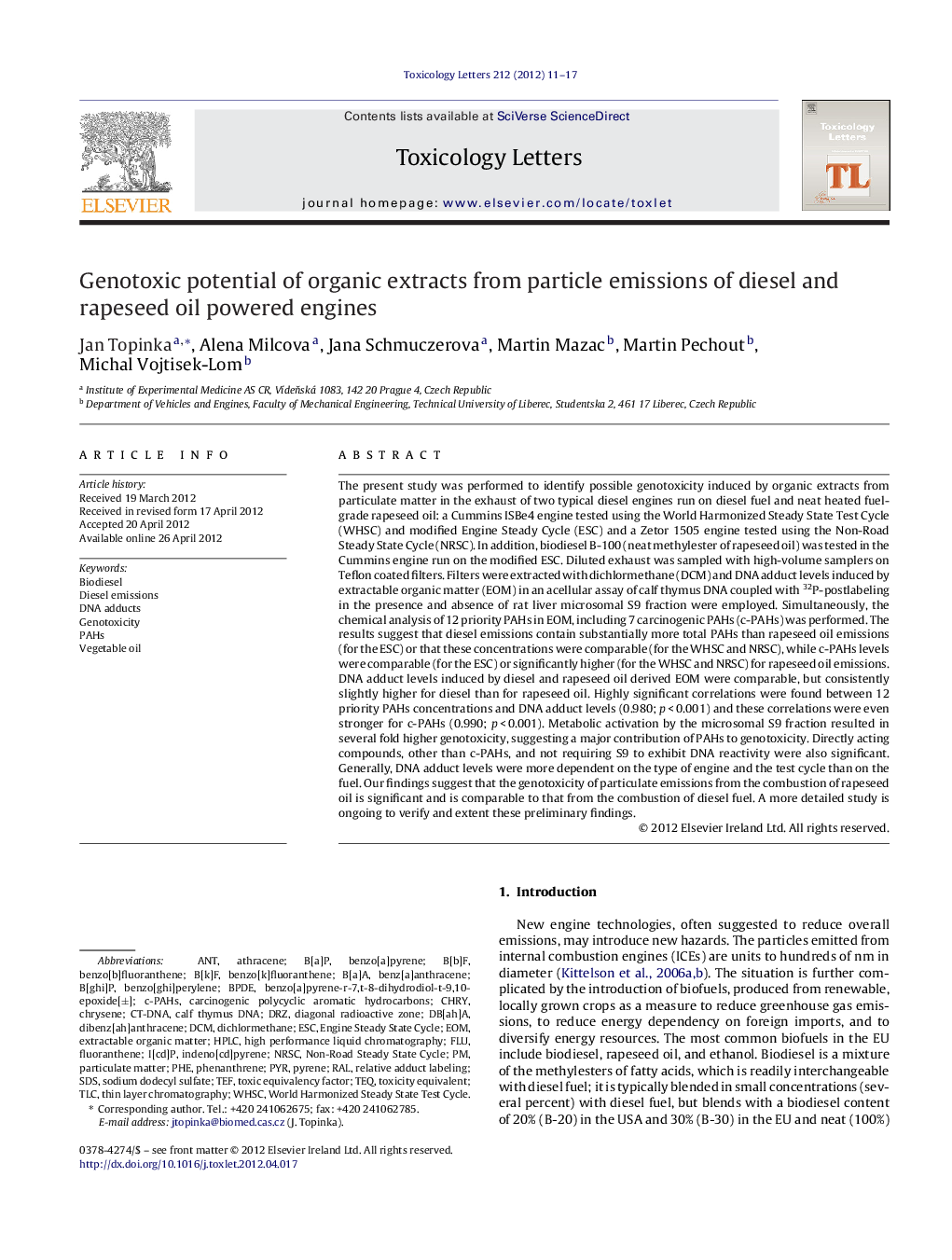| کد مقاله | کد نشریه | سال انتشار | مقاله انگلیسی | نسخه تمام متن |
|---|---|---|---|---|
| 2599598 | 1133220 | 2012 | 7 صفحه PDF | دانلود رایگان |

The present study was performed to identify possible genotoxicity induced by organic extracts from particulate matter in the exhaust of two typical diesel engines run on diesel fuel and neat heated fuel-grade rapeseed oil: a Cummins ISBe4 engine tested using the World Harmonized Steady State Test Cycle (WHSC) and modified Engine Steady Cycle (ESC) and a Zetor 1505 engine tested using the Non-Road Steady State Cycle (NRSC). In addition, biodiesel B-100 (neat methylester of rapeseed oil) was tested in the Cummins engine run on the modified ESC. Diluted exhaust was sampled with high-volume samplers on Teflon coated filters. Filters were extracted with dichlormethane (DCM) and DNA adduct levels induced by extractable organic matter (EOM) in an acellular assay of calf thymus DNA coupled with 32P-postlabeling in the presence and absence of rat liver microsomal S9 fraction were employed. Simultaneously, the chemical analysis of 12 priority PAHs in EOM, including 7 carcinogenic PAHs (c-PAHs) was performed. The results suggest that diesel emissions contain substantially more total PAHs than rapeseed oil emissions (for the ESC) or that these concentrations were comparable (for the WHSC and NRSC), while c-PAHs levels were comparable (for the ESC) or significantly higher (for the WHSC and NRSC) for rapeseed oil emissions. DNA adduct levels induced by diesel and rapeseed oil derived EOM were comparable, but consistently slightly higher for diesel than for rapeseed oil. Highly significant correlations were found between 12 priority PAHs concentrations and DNA adduct levels (0.980; p < 0.001) and these correlations were even stronger for c-PAHs (0.990; p < 0.001). Metabolic activation by the microsomal S9 fraction resulted in several fold higher genotoxicity, suggesting a major contribution of PAHs to genotoxicity. Directly acting compounds, other than c-PAHs, and not requiring S9 to exhibit DNA reactivity were also significant. Generally, DNA adduct levels were more dependent on the type of engine and the test cycle than on the fuel. Our findings suggest that the genotoxicity of particulate emissions from the combustion of rapeseed oil is significant and is comparable to that from the combustion of diesel fuel. A more detailed study is ongoing to verify and extent these preliminary findings.
► We compared genotoxicity of diesel and rapeseed oil particulate exhaust.
► Engines run on rapeseed oil produced comparable quantities of carcinogenic PAHs.
► Diesel and rapeseed oil powered engines induced comparable levels of DNA adducts.
► Type of engine and test cycle are more important for genotoxicity than the fuel type.
Journal: Toxicology Letters - Volume 212, Issue 1, 7 July 2012, Pages 11–17